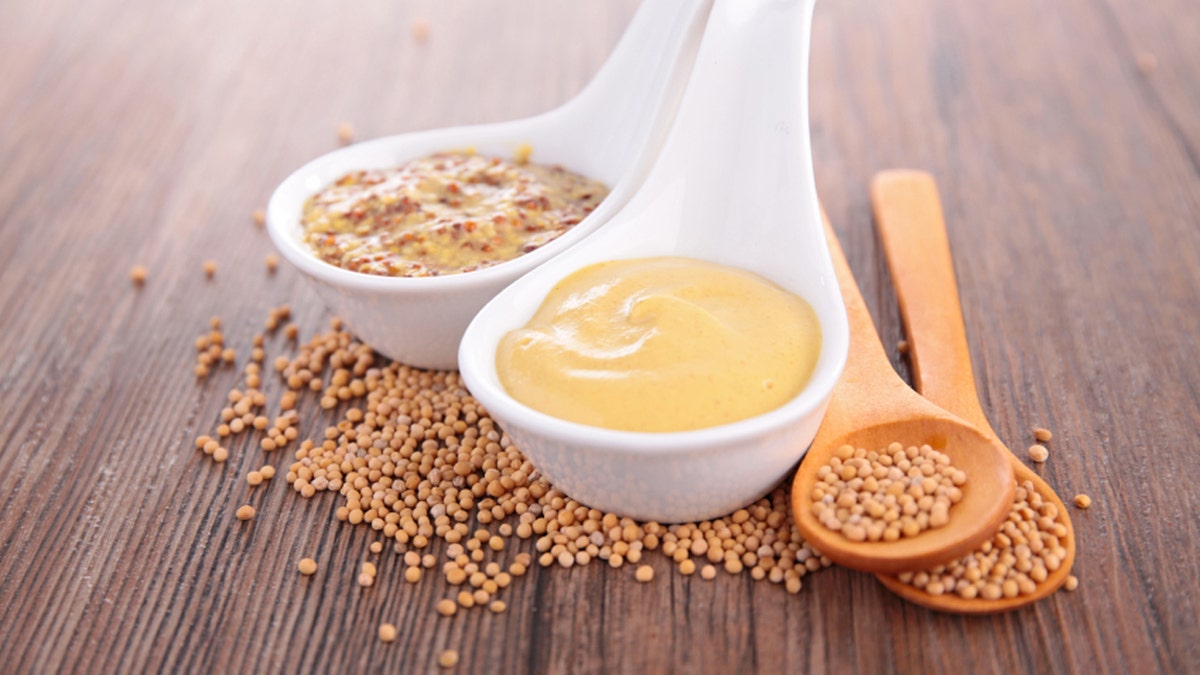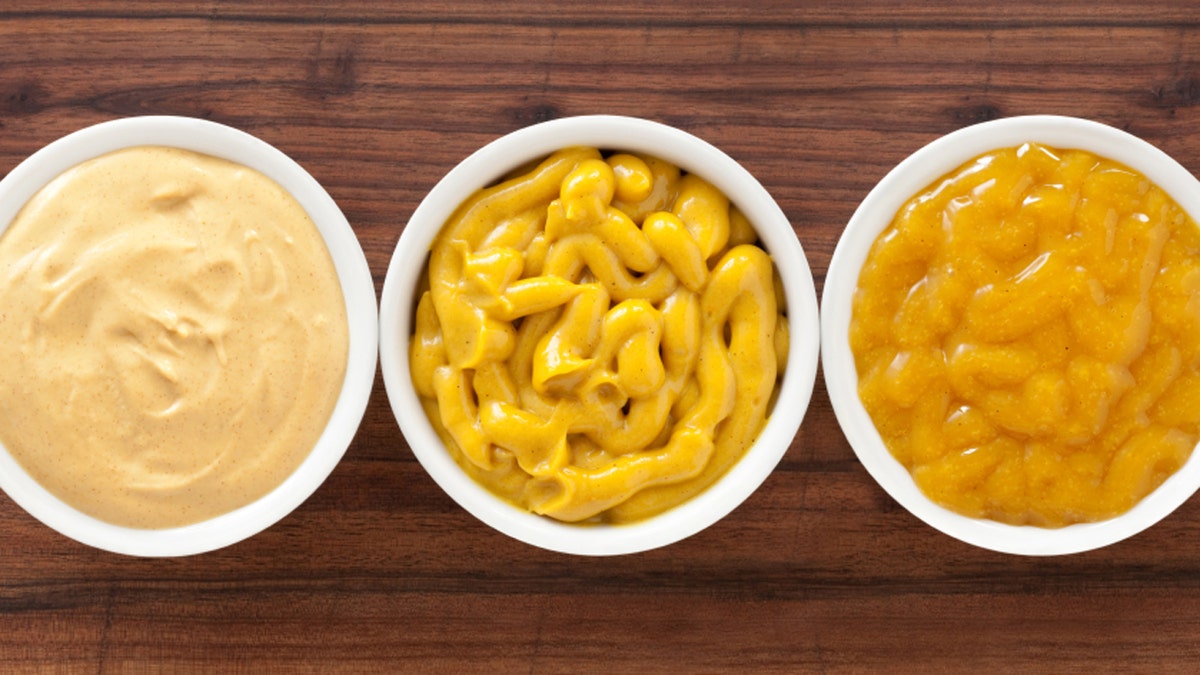
A hotdog just isn't complete without a zigzag of mustard. But what kind is the best? (iStock)
Mustard is not as polarizing as some other foods (like, say, cilantro). But if you love mustard, you tend to really love it.
“There is something about mustard that inspires zaniness, a sort of goofy pursuit of a mustard obsession,” writes Michele Anna Jordan in the revised 2015 edition of "The Good Cook’s Book Of Mustard."
For example, Jordan says when I reach her by phone, there is a mustard museum. Yes, at the National Mustard Museum in Middleton, Wisconsin—my next call, naturally—Barry Levenson maintains a collection of more than 5,800 mustards.

mustard
Even though it's such an ancient condiment (there are mustard references in the Bible), Levenson is always turning up something new and different, such as sea buckthorn mustard made from an obscure berry.
Now, sea buckthorn mustard is all well and good for, you know, a mustard curator, but it's hardly the condiment we usually reach for when we're making a sandwich. Here's a rundown of essential mustard know-how, plus a primer on the seven most common types.
IT'S IN THE SEED
Mustard's variety is staggering, but it all comes down to one plant in the Brassica family and three—but really only two—types of seeds it produces: white, also referred to as yellow because it’s light yellow in color; brown, and black.
The majority of commercial mustard is made with white or brown mustard seeds, or a mix of the two.
Black seeds are rarely used for mustard. If anything, you'll find them sold whole at Indian markets, as they’re common in Indian cooking.
More from Epicurious
The Epic Hack to Peeling Hard Boiled Eggs Faster
Epi’s 25 Most Popular Recipes of 2015
THE BIG HEAT
Pop a mustard seed in your mouth and suck on it. “You’ll feel the heat,” says Jordan. When your saliva hits the seed, it sparks the release of a compound inside the seed, causing that familiar nostril-flaring sensation.
And that’s all prepared mustard in a jar is: dried mustard seeds mixed with water and some other liquid—typically vinegar—to get that chemical reaction going.
Dry mustard or mustard flour is the dried seeds ground to a fine powder. It’s in the spice section of the store and is the basis of other styles of prepared mustard (more on that below).
Brown seeds carry more pronounced heat than white seeds. The addition of other ingredients—wine or beer instead of vinegar, spices, herbs and so on—and the degree to which the seeds are milled give prepared mustard its personality and flavor.
WHAT'S YOUR STYLE?
Yellow or American ballpark. The classic hot dog condiment gets its bright hue from turmeric, not from the ground white seeds from which it’s made. It’s acidic but not spicy hot.

Dijon. A silky smooth mustard made with brown seeds, synonymous with the French town where it originated and that Grey Poupon commercial. Dijon made in Dijon, France must adhere to strict standards as defined by the government like true Champagne, but no such U.S. standards exist. What’s sold here as “Dijon-style” mustard is a lot more toned down than the original, Jordan said.
Deli or American brown. This deli staple made from brown seeds is mildly spicy and not as tart as yellow mustard.
Chinese. Hot dry mustard (ground from brown seeds) mixed with water, it packs a serious punch. The mustard that comes with your egg rolls at a Chinese restaurant or in the takeout bag is in this category.
English. Colman’s is the iconic brand of this mustard made from white and brown seeds. It’s most often seen in powdered form, though it’s sold in jars too.
German. These mustards range in flavor, texture and heat but the two most popular styles, both made primarily with the brown seed, are hot and smooth (the Lowensenf brand is a good example) and Bavarian-style, which is coarser, milder, and sweeter, says Levenson.
Whole- or coarse-grain. What whole-wheat bread is to white bread, this mustard is made from a mix of whole and ground seeds, usually the brown kind.
Learn more must-know mustard tips.
